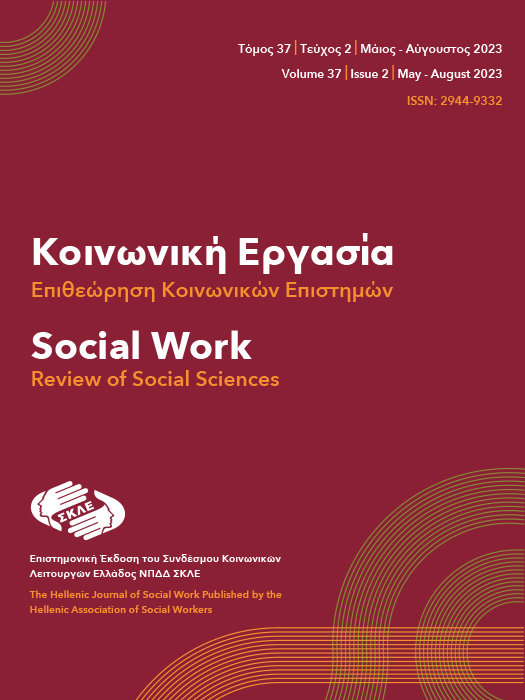Η αυτοτραυματική συμπεριφορά των νέων ενηλίκων από την οπτική των φίλων - Μια ποιοτική μελέτη

Περίληψη
Η συγκεκριμένη μελέτη πραγματεύεται τον τρόπο που παρουσιάζει, αντιλαμβάνεται και επιδρά το στενό φιλικό περιβάλλον στην αυτοτραυματική συμπεριφορά των νέων ενηλίκων. Η μη αυτοκτονική αυτοτραυματική συμπεριφορά (Non-suicidal-self-injury, NSSI) είναι σκόπιμη και δεν έχει πρόθεση αυτοκτονικής πράξης. Τα συνηθέστερα σημεία του σώματος που γίνεται ο αυτοτραυματισμός είναι τα χέρια, τα πόδια και ο κορμός. Η παρούσα είναι μια ποιοτική μελέτη. H συλλογή των δεδομένων έγινε με ημι-δομημένη συνέντευξη με την μέθοδο της χιονοστιβάδας. Οι συμμετέχοντες/ουσες της έρευνας ήταν 12 άτομα, 8 γυναίκες και 4 άνδρες από 19 έως 25 ετών. Κριτήριο εισαγωγής στην μελέτη ήταν η στενή σχέση με φίλο/η που έχει αυτοτραυματική συμπεριφορά. Τα αποτελέσματα αναδεικνύουν το πως οι συγκρουσιακοί δεσμοί με την οικογένεια και η συναισθηματική ανασφάλεια λόγω αυτών των δεσμών από την οικογένεια, σε συνδυασμό με την χαμηλή κοινωνικότητα και εσωστρέφεια του ατόμου φαίνεται να ενισχύουν την αυτοτραυματική συμπεριφορά των νέων. Ακόμη, ως επιβαρυντικοί παράγοντες για την εκδήλωση αυτοτραυματικής συμπεριφοράς αναφέρονται οι συχνές αλλαγές στην εργασία, στην ερωτική ζωή και γενικότερα στην διατάραξη της καθημερινότητας τους. Εντούτοις, το στενό φιλικό δίκτυο φαίνεται να ενθαρρύνει και να συμβάλλει στην αναζήτηση βοήθειας για την διαχείριση της αυτοτραυματικής συμπεριφοράς. Οι φίλοι/ες των ατόμων που αυτοτραυματίζονται θεωρούν την συνεισφορά τους θετική και υποστηρικτική στην προσπάθεια απεγκλωβισμού του ατόμου από τον αυτοτραυματισμό αλλά και επίπονη και δύσκολη για τους ίδιους. Η επιστήμη της Κοινωνικής Εργασίας οφείλει να αξιοποιήσει ολιστικά μοντέλα στην παρέμβασή της, ώστε να εκτιμήσει και να αξιολογήσει όλα τα συστήματα στα οποία ανήκει κι αλληλοεπιδρά ένα άτομο, στοχεύοντας στην κατανόηση και ερμηνεία της πολυπλοκότητας των καταστάσεων που το οδηγούν στην εμφάνιση αυτοτραυματικών συμπεριφορών.
Λεπτομέρειες άρθρου
- Πώς να δημιουργήσετε Αναφορές
-
Κούτρα Κ., Σπάρος Λ., & Κοκαλιάρη Ε. (2023). Η αυτοτραυματική συμπεριφορά των νέων ενηλίκων από την οπτική των φίλων - Μια ποιοτική μελέτη. Κοινωνική Εργασία. Επιθεώρηση Κοινωνικών Επιστημών, 37(2), 1–26. https://doi.org/10.12681/socialwork-rss.36330
- Τεύχος
- Τόμ. 37 Αρ. 2 (2023): 2/2023
- Ενότητα
- Άρθρο


